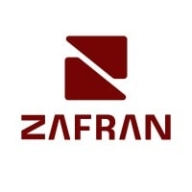


IBM Guardium Vulnerability Assessment and Microsoft Defender for Cloud are cybersecurity products, with Microsoft Defender for Cloud having the upper hand due to its comprehensive integration capabilities.
Features: IBM Guardium offers proactive threat detection, compliance management, and data-centric protection. In contrast, Microsoft Defender for Cloud excels with cloud-native security, automated threat detection, and a robust compliance framework.
Room for Improvement: IBM Guardium could enhance integration with third-party solutions, improve user interface intuitiveness, and speed up customer support response times. Microsoft Defender for Cloud may benefit from expanded support for non-Microsoft environments, improved UI for managing multiple subscriptions, and more customizable dashboard features.
Ease of Deployment and Customer Service: Microsoft Defender for Cloud provides seamless integration with Microsoft services, facilitating deployment and offering accessible customer support. IBM Guardium may require more complex setups, especially outside IBM environments, although it offers reliable customer support.
Pricing and ROI: IBM Guardium involves higher setup costs but delivers ROI through strong data protection. Microsoft Defender for Cloud presents competitive pricing and offers significant ROI by leveraging Azure integration for cost savings in management and resource optimization.
| Product | Market Share (%) |
|---|---|
| Microsoft Defender for Cloud | 5.2% |
| Zafran Security | 1.0% |
| IBM Guardium Vulnerability Assessment | 0.5% |
| Other | 93.3% |


| Company Size | Count |
|---|---|
| Small Business | 26 |
| Midsize Enterprise | 7 |
| Large Enterprise | 45 |
Zafran Security integrates with existing security tools to identify and mitigate vulnerabilities effectively, proving that most critical vulnerabilities are not exploitable, optimizing threat management.
Zafran Security introduces an innovative operating model for managing security threats and vulnerabilities. By leveraging the threat exposure management platform, it pinpoints and prioritizes exploitable vulnerabilities, reducing risk through immediate remediation. This platform enhances your hybrid cloud security by normalizing vulnerability signals and integrating specific IT context data, such as CVE runtime presence and internet asset reachability, into its analysis. No longer reliant on patch windows, Zafran Security allows you to manage risks actively.
What are the key features of Zafran Security?
What benefits can users expect from Zafran Security?
In industries where security is paramount, such as finance and healthcare, Zafran Security provides invaluable protection by ensuring that only exploitable vulnerabilities are addressed. It allows entities to maintain robust security measures while allocating resources efficiently, fitting seamlessly into existing security strategies.
IBM Guardium Vulnerability Assessment scans data infrastructures (databases, data warehouses and big data environments) to detect vulnerabilities, and suggests remedial actions. The solution identifies exposures such as missing patches, weak passwords, unauthorized changes and misconfigured privileges.
Microsoft Defender for Cloud is a comprehensive security solution that provides advanced threat protection for cloud workloads. It offers real-time visibility into the security posture of cloud environments, enabling organizations to quickly identify and respond to potential threats. With its advanced machine learning capabilities, Microsoft Defender for Cloud can detect and block sophisticated attacks, including zero-day exploits and fileless malware.
The solution also provides automated remediation capabilities, allowing security teams to quickly and easily respond to security incidents. With Microsoft Defender for Cloud, organizations can ensure the security and compliance of their cloud workloads, while reducing the burden on their security teams.
We monitor all Vulnerability Management reviews to prevent fraudulent reviews and keep review quality high. We do not post reviews by company employees or direct competitors. We validate each review for authenticity via cross-reference with LinkedIn, and personal follow-up with the reviewer when necessary.